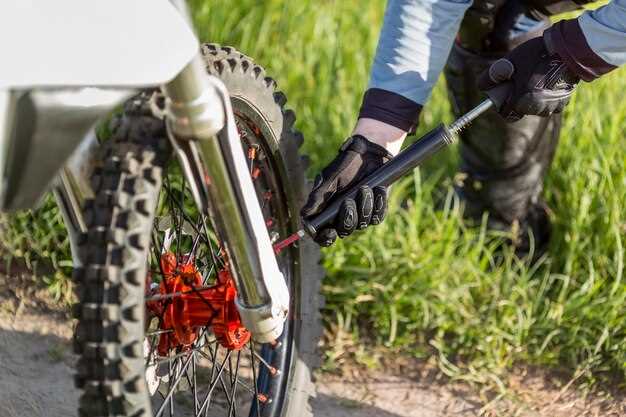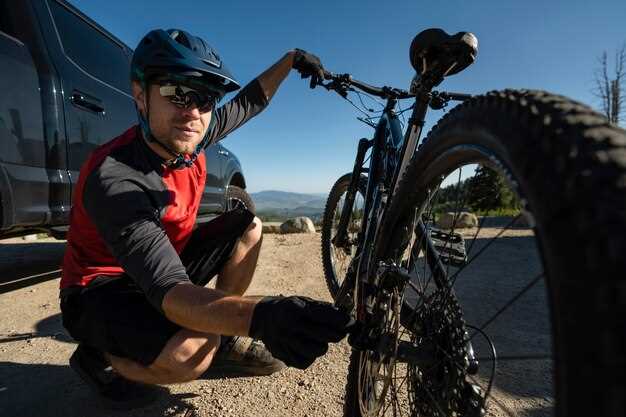
When it comes to conquering rugged trails and challenging terrains, the performance of your bicycle can make all the difference. Off-road biking demands a unique set of skills and equipment, and ensuring that your bike is optimized for such adventures is crucial. From the right tires to adjustable suspension and frame geometry, every aspect of your bike contributes to its overall performance in demanding conditions.
Understanding the Terrain is the first step in optimizing your bike. Different terrains, such as rocky paths, muddy trails, or sandy dunes, require specific setups to enhance traction and stability. Each type of surface can present its own challenges, which means that a one-size-fits-all approach is rarely sufficient. Knowing what to expect on your ride empowers you to make the most effective modifications.
Furthermore, investing in quality components is essential for off-road biking. Whether it’s upgrading your tires for better grip or fine-tuning your suspension to absorb shocks, high-quality parts can significantly elevate your riding experience. Each enhancement you make not only improves performance but also increases your comfort and safety on the trail.
Ultimately, the key to a successful off-road biking experience lies in customization. Your bike should reflect your personal riding style and the specific demands of the trails you frequent. By tailoring your setup, you can enhance control, durability, and speed, ensuring that every ride is both exhilarating and safe.
Upgrading Tires for Traction and Durability

One of the most crucial upgrades for optimizing your bike’s off-road performance is selecting the right tires. Tires significantly influence traction, control, and overall durability when riding on rough terrains.
First, consider the tread pattern. Tires with deeper, more aggressive treads can provide better grip on loose surfaces like mud, sand, and gravel. Look for tires that feature widely spaced knobs designed to shed mud efficiently, ensuring that the contact patch remains clear for optimal traction.
Next, assess the tire width. Wider tires typically offer increased surface area, enhancing stability and traction. They can also run at lower pressures, which allows for better shock absorption and improves control over uneven terrain. However, wider tires can increase rolling resistance; thus, finding the right balance is essential.
Durability is equally important, especially for off-road conditions. Opt for tires made from high-quality rubber compounds that resist punctures and abrasions. Some tires incorporate protective layers or reinforced sidewalls to prevent damage from sharp rocks and roots. Consider models specifically designed for your typical riding environment to enhance longevity.
Another factor to evaluate is the tire’s compatibility with your bike and riding style. Ensure that the upgraded tires fit your rims correctly and match your bike’s specifications. Factors such as the terrain type, riding frequency, and personal preference should guide your choice.
Finally, don’t underestimate the importance of tire pressure. Adjusting the pressure according to terrain can significantly impact performance. Lower pressures maximize grip on rough surfaces, while higher pressures are suitable for hard-packed trails. Regularly check and maintain the optimal tire pressure for your conditions.
In conclusion, upgrading your bike’s tires with a focus on tread pattern, width, durability, compatibility, and pressure management will greatly enhance off-road performance, providing the traction and reliability needed for adventurous rides.
Tuning Suspension for Enhanced Control

Suspension tuning is critical for maximizing your bike’s performance in off-road conditions. Proper adjustments can drastically improve handling, comfort, and stability over rough terrain. Here are key aspects to consider when tuning your suspension.
Understand Your Terrain: Different types of off-road surfaces–such as rocky trails, muddy paths, or sandy dunes–require specific suspension setups. Assess your typical riding environment to determine if you need a softer or firmer setup. Softer suspension is generally better for absorbing bumps, while firmer settings improve control on smoother trails.
Adjusting Fork Compression: The front fork’s compression setting controls how quickly the forks compress under impact. A slower compression setting is suitable for technical trails where sharp impacts are common, as it allows more time for the suspension to absorb shocks. Conversely, a quicker compression setting may be beneficial for smoother rides, as it offers better responsiveness during jumps or rapid maneuvers.
Rebound Settings: Rebound damping affects how quickly your suspension returns to its original position after compressing. Too fast can lead to a bouncy ride, while too slow may cause the bike to feel sluggish. A well-tuned rebound setting allows the suspension to settle smoothly without losing traction, providing enhanced control on descents and over obstacles.
Spring Rate Selection: The spring rate is crucial for providing the right amount of support. A heavier rider may require stiffer springs, while lighter riders benefit from softer springs. Choosing the correct spring rate enhances the bike’s ability to absorb terrain variations, improving overall comfort and control.
Use the Right Tools: Investing in a good set of suspension tuning tools can greatly facilitate adjustments. A shock pump, for example, allows for precise tuning of air pressure, while a suspension setup guide helps you track and modify settings effectively.
Test and Fine-Tune: After making initial adjustments, take your bike for a test ride. Pay attention to how it responds to various terrains. Make incremental changes to your settings and continuously evaluate the bike’s performance. This iterative approach helps identify the ideal setup for your specific riding style and conditions.
Tuning suspension properly will elevate your control and confidence while riding off-road. By taking the time to customize your setup, you’ll enjoy improved handling, increased comfort, and an overall better riding experience.
Adjusting Gearing for Varied Terrain
When off-road cycling, the ability to tackle different terrains efficiently largely depends on your bike’s gearing. Adjusting the gearing allows you to optimize your pedaling power, improve traction, and enhance overall performance across challenging landscapes.
A crucial aspect of gearing is the gear ratio, which is determined by the size of your chainrings and cassette. For steep climbs, opting for a lower gear ratio makes it easier to pedal uphill by reducing the effort required per pedal stroke. This allows for better control and stability on rocky or uneven surfaces, where maintaining momentum is vital.
Conversely, when navigating flat or downhill sections, a higher gear ratio enables you to achieve greater speed. Shifting to larger chainrings and smaller sprockets provides the necessary leverage for efficient high-speed pedaling. However, be aware of the terrain; shifting too late can result in losing power and slowing down.
Multi-chainring setups generally provide more flexibility for varied terrain, allowing for finer control when shifting between climbs and descents. On the other hand, a single-chainring system simplifies shifts and reduces weight, which could be beneficial in technical off-road conditions, where quick gear changes are crucial.
Consider the tire size as well, as larger tires may require adjustments in gearing to maintain optimal cadence. A wider tire increases rolling resistance, necessitating either lower gearing to aid climbing or a different strategy to manage speed effectively as you ride.
Lastly, practice makes perfect. Experiment with different gearing setups during your rides to discover what combinations work best for you in various conditions. Understanding your bike’s capabilities and tailoring your gearing accordingly will significantly enhance your off-road experience.